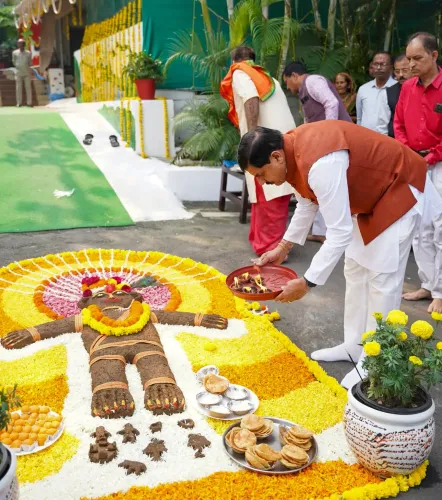How Is GST 2.0 Boosting Uttarakhand's Economy?

Synopsis
Key Takeaways
- GST reforms are beneficial for small farmers and artisans.
- The tourism sector is set to thrive with reduced hotel tariffs.
- Local industries will see enhanced competitiveness and profitability.
- Job creation is anticipated in multiple sectors due to increased demand.
- Overall economic growth will be stimulated through these reforms.
New Delhi, Oct 21 (NationPress) The GST reforms are unveiling extensive benefits throughout Uttarakhand's economy, affecting everyone from small hill farmers nurturing traditional crops to women artisans upholding Aipan and Ringal crafts, and from homestay operators in Rishikesh to industrial workers in Rudrapur, as stated in an official announcement made on Tuesday.
By alleviating tax pressures and enhancing competitiveness, these reforms are poised to fortify livelihood security, boost tourism, accelerate MSME growth, and promote green entrepreneurship.
With the GST rate slashed from 12 percent to 5 percent, pahari toor dal has gained a competitive edge in the organic and health food sectors. This change is expected to benefit small farmers across the districts of Chamoli, Almora, Tehri, Nainital, and Pithoragarh. Likewise, Uttarakhand’s red rice grown in Purola and Mori will likely become more appealing, especially in the packaged and health food markets.
Farmers cultivating the GI-tagged Lakhori Mirchi from Almora, renowned for its unique aroma and taste, will also reap benefits from the GST rate reduction.
The tourism sector, which includes hotels and restaurants, constitutes 13.6 percent of Uttarakhand’s economy and offers direct and indirect employment to approximately 80,000 individuals. With the GST rate on hotel tariffs up to Rs 7,500 lowered from 12 percent to 5 percent, this reform is anticipated to make travel more budget-friendly, aiding small hotels, restaurants, and homestays in regions like Nainital, Mussoorie, Auli, Chopta, Munsyari, Haridwar, and Rishikesh.
In the hilly districts of Uttarakhand, the seasonal cottage industry led by local women producing hand-knitted sweaters, caps, and socks is significant. With the GST rate reduced from 12 percent to 5 percent, prices are expected to decrease, leading to heightened demand and increased earnings. Similarly, artisans crafting baskets, trays, and utility items from ringal (hill bamboo) will also benefit.
Uttarakhand is home to 383 registered food processing units, primarily situated in Rudrapur, employing nearly 30,000 individuals. The reduction of the GST rate from 12 percent to 5 percent is expected to enhance profit margins, promote value addition, and encourage investment in areas like fruit processing, herbal products, and organic foods, thus strengthening the state’s agro-industrial foundation.
The automobile manufacturing sector across Pantnagar, Rudrapur, Haridwar, and Kashipur employs around 50,000 people directly and indirectly. With the GST rate on vehicles up to 1200cc (petrol) and 1500cc (diesel) decreased from 28 percent to 18 percent, prices are expected to drop. This change will stimulate domestic demand, support manufacturers, and create new job opportunities throughout the automobile value chain.
Moreover, the medical device park located in the State Infrastructure and Industrial Development Corporation of Uttarakhand Limited (SIDCUL) industrial zone is set to benefit from the GST reduction to 5 percent on these products.









